32 Results

This chapter covers:Why is Research Important?Approaches to ResearchAnalyzing FindingsEthicsFor more information, visit OpenStax College.
- Subject:
- Psychology
- Social Science
- Material Type:
- Module
- Author:
- OpenStax College
- Date Added:
- 07/18/2021
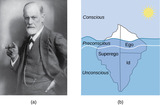
By the end of this section, you will be able to:Explain how scientific research addresses questions about behaviorDiscuss how scientific research guides public policyAppreciate how scientific research can be important in making personal decisions
- Subject:
- Psychology
- Social Science
- Material Type:
- Module
- Author:
- OpenStax College
- Date Added:
- 07/18/2021
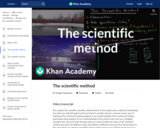
How the scientific method is used to ask questions and test explanations.
- Subject:
- Applied Science
- Biology
- Life Science
- Mathematics
- Measurement and Data
- Material Type:
- Lesson
- Provider:
- Khan Academy
- Provider Set:
- Khan Academy
- Author:
- Sal Khan
- Date Added:
- 03/15/2016

In this activity, students act as engineers to determine which type of insulation would conserve the most energy.
- Subject:
- Applied Science
- Architecture and Design
- Engineering
- Material Type:
- Activity/Lab
- Lesson Plan
- Provider:
- TeachEngineering
- Provider Set:
- TeachEngineering
- Author:
- Denise Carlson
- Malinda Schaefer Zarske
- Natalie Mach
- Sharon D. Perez-Suarez
- Date Added:
- 09/18/2014
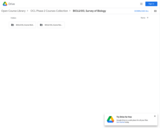
This course will introduce you to a general overview of the biological world. Important concepts will be reinforced and expanded upon through completion of weekly laboratory activities and homework assignments. Upon successful conclusion of the course, students will be able to do the following: Describe the nature of science, including its methods and its limitations; Describe the basic methodology of doing science and the scientific method; Use the scientific method to study everyday situations as well as in laboratory/field investigations; Identify, describe, and explain at a rudimentary level and present examples of, the characteristics common to all living things; Explain that living organisms are composed of molecules which interact in a variety of different chemical reactions necessary to sustain life; Explain that living organisms are comprised of one or more cells and are classified as prokaryotic or eukaryotic based on cellular characteristics; Describe the hereditary information possessed by living and explain how that information determines the cellular characteristics and functions (including basic Mendelian genetics); Explain and describe, with examples, the diversity of life, at different levels (basic molecular to ecological) and how it is hierarchically organized into systems; Explain how evolution by natural selection occurs, and describe the evidence that supports the theory of evolution; and more.
- Subject:
- Biology
- Life Science
- Material Type:
- Assessment
- Full Course
- Reading
- Syllabus
- Provider:
- Washington State Board for Community & Technical Colleges
- Provider Set:
- Open Course Library
- Date Added:
- 07/14/2021

Students explore how pendulums work and why they are useful in everyday applications. In a hands-on activity, they experiment with string length, pendulum weight and angle of release. In an associated literacy activity, students explore the mechanical concept of rhythm, based on the principle of oscillation, in a broader biological and cultural context in dance and sports, poetry and other literary forms, and communication in general.
- Subject:
- Applied Science
- Engineering
- Mathematics
- Physical Science
- Physics
- Material Type:
- Activity/Lab
- Lesson Plan
- Provider:
- TeachEngineering
- Provider Set:
- TeachEngineering
- Author:
- Ben Heavner
- Denise Carlson
- Malinda Schaefer Zarske
- Sabre Duren
- Date Added:
- 09/18/2014
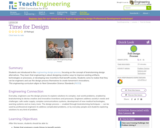
Students are introduced to the engineering design process, focusing on the concept of brainstorming design alternatives. They learn that engineering is about designing creative ways to improve existing artifacts, technologies or processes, or developing new inventions that benefit society. Students come to realize that they can be engineers and use the design process themselves to create tomorrow's innovations.
- Subject:
- Applied Science
- Engineering
- Material Type:
- Activity/Lab
- Lesson Plan
- Provider:
- TeachEngineering
- Provider Set:
- TeachEngineering
- Author:
- Denise W. Carlson
- Jackie Sullivan
- Malinda Schaefer Zarske
- Megan Podlogar
- Date Added:
- 09/18/2014
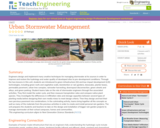
Engineers design and implement many creative techniques for managing stormwater at its sources in order to improve and restore the hydrology and water quality of developed sites to pre-development conditions. Through the two lessons in this unit, students are introduced to green infrastructure (GI) and low-impact development (LID) technologies, including green roofs and vegetative walls, bioretention or rain gardens, bioswales, planter boxes, permeable pavement, urban tree canopies, rainwater harvesting, downspout disconnection, green streets and alleys, and green parking. Student teams take on the role of stormwater engineers through five associated activities. They first model the water cycle, and then measure transpiration rates and compare native plant species. They investigate the differences in infiltration rates and storage capacities between several types of planting media before designing their own media mixes to meet design criteria. Then they design and test their own pervious pavement mix combinations. In the culminating activity, teams bring together all the concepts as well as many of the materials from the previous activities in order to create and install personal rain gardens. The unit prepares the students and teachers to take on the design and installation of bigger rain garden projects to manage stormwater at their school campuses, homes and communities.
- Subject:
- Applied Science
- Engineering
- Hydrology
- Physical Science
- Material Type:
- Full Course
- Unit of Study
- Provider:
- TeachEngineering
- Provider Set:
- TeachEngineering
- Author:
- Brigith Soto
- Jennifer Butler
- Krysta Porteus
- Maya Trotz
- Ryan Locicero
- William Zeman
- Date Added:
- 09/18/2014

- Subject:
- Biology
- Material Type:
- Full Course
- Date Added:
- 09/29/2021

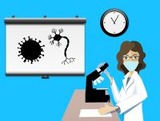
In this lesson, students will distinguish between experimental and literary research and sort sources to determine the relevance and validity of scientific information to a given problem. They will also identify and explain the relevance of parts of an article to the given problem.
- Material Type:
- Lesson
- Author:
- OER Librarian
- Date Added:
- 09/29/2021
